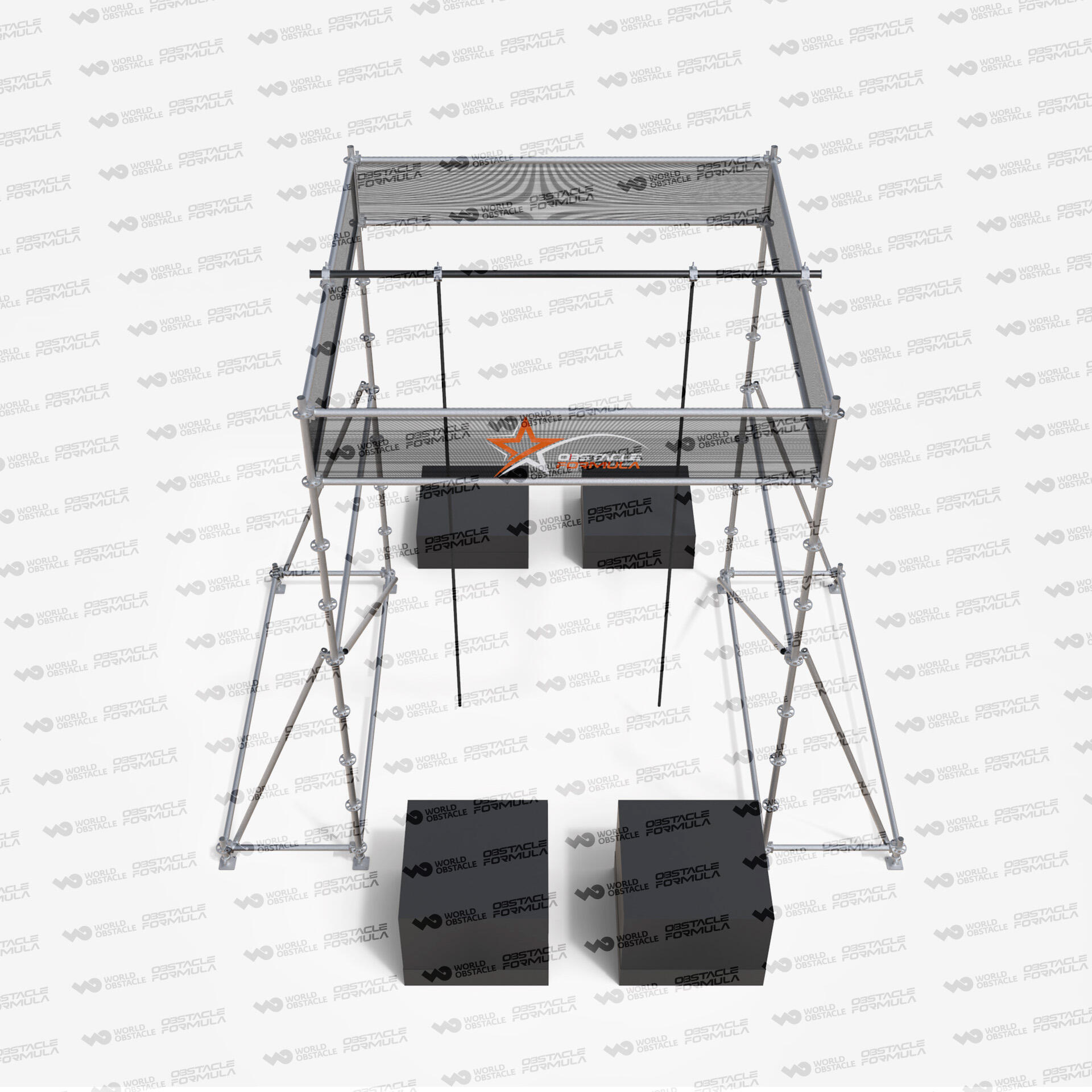Ce califică sportul cu obstacole ca una dintre cele cinci sporturi ale pentathlonului la Jocurile Olimpice
Evoluția sportului cu obstacole în cadrul pentathlonului modern
De la calatorie la obstacol: O schimbare istorică
Pentatlonul modern arată foarte diferit în zilele noastre comparativ cu perioada debutului său în antichitate. La început, concurenții trebuiau să stăpânească cinci abilități esențiale: lupta cu sabia, înotul pe distanțe, călăria peste obstacole, tragerea precisă cu pistolul și, în final, o alergare lungă prin teren accidentat. Dar lucrurile s-au schimbat destul de mult în ultimul timp. Traseele cu obstacole joacă acum un rol important în competiții, aducând ceva complet nou în ecuație, care entuziasmează publicul și face ca sportul să pară mai conectat la tendințele actuale ale atletismului. Uniunea Internațională de Pentatlon Modern a făcut vâlvă atunci când a decis să înlocuiască călăria cu elemente de alergare într-un traseu cu obstacole cu câțiva ani în urmă. Această schimbare nu a vizat doar actualizarea listei de probe, ci a reprezentat de fapt un punct de cotitură real în modul în care este perceput și practicat pentatlonul în întreaga lume.
Schimbarea nu este doar superficială, ci este susținută și de cifre reale care confirmă această tendință. Priviți doar ce s-a întâmplat în ultimii zece ani — popularitatea sporturilor de obstacole a crescut semnificativ. Conform diverselor surse din industrie, atât numărul spectatorilor, cât și al participanților, a crescut substanțial, în mare parte din cauza faptului că organizatorii au început să includă aceste noi elemente sportive în evenimentele lor. Putem observa același tipar și în timpul competițiilor mari. Evenimentele cu cursă de obstacole atrag în mod constant mulțimi mai mari și generează mai mult entuziasm comparativ cu concursurile tradiționale de pentatlon, care uneori întâmpină dificultăți în a menține interesul spectatorilor și al competitorilor.
Visia UIPM pentru Integrarea Sporturilor Urbană
UIPM lucrează la planuri de a aduce sporturile urbane și de obstacole în mixul probei de pentatlon, ceva care ar putea schimba cu adevărat percepția oamenilor despre acest sport tradițional. Schimbarea atenției către competiții desfășurate în orașe ar trebui să contribuie la accesibilitatea pentatlonului pentru toată lumea, în special pentru atragerea unui număr mai mare de tineri în comunitățile locale. Ceea ce este important aici este faptul de a face sportul din nou actual și relevant. Tinerii de astăzi se orientează spre activități pline de acțiune care au loc chiar în cartierele lor, astfel că aceste schimbări ar putea aduce o nouă viață unui vechi favorit, păstrându-l conectat la locurile unde următoarea generație își petrece majoritatea timpului.
UIPM a derulat mai multe inițiative și programe de testare reușite care demonstrează abordarea lor inovatoare. Iată, de exemplu, modul în care au transformat Pentatlonul Modern, introducând trasee cu obstacole de tip Ninja în loc de probele tradiționale. Tinerii par să fie cu adevărat interesați, dacă ne luăm după creșterea înregistrată atât la spectatorii, cât și la participanții la aceste competiții. UIPM a publicat chiar și rezultate care arată că evenimentele organizate în orașe nu doar că îmbunătățesc performanțele sportivilor, ci atrag și mai mulți spectatori. Analizând statistica, o bună parte din generația Z și din cea a milenialilor urmărește acum versiunile actualizate fie la televizor, fie pe rețelele de socializare. Această atenție în creștere dovedește cât de eficientă poate fi integrarea sporturilor urbane pentru atragerea unui public nou.
De ce Sporturile cu Obstacole Se Potrivesc Etosului Olympic Pentathlon
Îmbunătățirea Înghetării Tineretului și Acessibilității
Tinerii par să se îndrăgostească cu adevărat de sporturile cu obstacole, ceea ce le-a făcut foarte populare la Pentatlonul Olimpic. Acest tip de provocări, datorită ritmului alert și solicitărilor fizice, atrage în mod deosebit copiii care caută activități mai captivante. Multe țări au început să abordeze cu seriozitate introducerea curselor cu obstacole în școli și centre comunitare. În unele locuri, s-au introdus chiar și activități precum parkour în cadrul lecțiilor obișnuite de educație fizică, oferindu-le elevilor alternative la activitățile tradiționale din sală. Datele statistice confirmă acest fenomen – a avut loc o creștere reală a numărului tinerilor care participă, în special în orașe, unde astfel de evenimente au loc în multiple locații. În prezent, aproximativ 42% dintre generația Z din SUA urmărește competiții olimpice care includ obstacole, ceea ce arată că această tendință nu este una trecătoare, ci un fenomen care le vorbește cu adevărat tinerilor din întreaga lume.
Testare Versatilitate: Putere, Strategie și Viteză
Sporturile cu obstacole îi pun cu adevărat la încercare pe competitori, necesitând un amestec de forță brută, gândire rapidă și reacții fulger care de fapt se potrivesc cu ceea ce au nevoie modern pentatloniștii. Mulți sportivi care trec de la competiții obișnuite de pentathlon la aceste provocări cu obstacole vorbesc despre progresul semnificativ în a se deplasa mai repede și a lua decizii mai inteligente în timpul curselor. Atunci când antrenorii încep să includă obstacole în sesiunile de antrenament, observă îmbunătățiri reale în mai multe aspecte ale performanței sportive. De exemplu, alergătorii tind să devină mai rapizi și mai eficienți în partea de alergare cu laser după ce lucrează pe trasee cu obstacole. Modul în care aceste metode de antrenament funcționează arată de ce sporturile cu obstacole nu doar că dezvoltă versatilitatea, ci de asemenea contribuie la îmbunătățirea rezultatelor tradiționale din pentathlon, motiv pentru care le vedem integrându-se perfect în standardele competiționale olimpice.
Impactul Global al OCR în Pentathlonul Competitiv
Beijing 2025-2028: Un Catalyst pentru Crecerea OCR
Campionatul Mondial de Obstacole, cu sediul la Beijing, programat pentru perioada 2025-2028, ar trebui să crească semnificativ numărul de persoane implicate la nivel global în competiții de pentatlon. Atunci când alergarea pe traseu cu obstacole devine parte a mixului de probe din Pentatlonul Modern, se deschid noi oportunități atât pentru competitori, cât și pentru spectatori din diferite țări. Vorbind despre un potențial real de creștere, mai ales având în vedere că 2028 pare a fi un moment important, deoarece sportul va ajunge în sfârșit pe scena Olimpică la Los Angeles. Toată această atenție aduce multe oportunități pentru companii care doresc să sponsorizeze evenimente și pentru magazinele locale care speră să profite de activitatea generată de taberele de antrenament și activitățile promoționale. Deși oficialii sportivi discută despre modul în care OCR ar putea schimba înfățișarea pentatlonului în viitor, majoritatea sunt de acord că atragerea unui număr mai mare de persoane care să participe și să urmărească evenimentele rămâne cea mai importantă victorie pentru toți cei implicați.
Conectarea Culturii Ninja Warrior cu Tradiția Olumpică
Când combinăm emoția de pe Ninja Warrior cu sporturile clasice ale pentatlonului, se întâmplă ceva cu adevărat interesant. Persoane care nici măcar nu s-au uitat la un pentatlon în viața lor brusc încep să urmărească aceste cursuri nebune de obstacole. Combinarea aduce o energie proaspătă competițiilor vechi, dar păstrând respectul față de originea pentatlonului, din Grecia antică. Unele organizații chiar au început să colaboreze în această direcție. A avut loc chiar un eveniment anul trecut unde sportivii au trebuit să urce pe pereți și să se balanseze între platforme, atrăgând mulțimi imense de tineri. Uitându-ne la ratingurile recente de televiziune, emisiuni precum American Ninja Warrior reușesc constant să adune peste 3 milioane de telespectatori pe episod. Potrivit unor sondaje, aproximativ 47% dintre generația Z și Millenials ar urmări mai des Jocurile Olimpice dacă ar include provocări în stil Ninja. Acest lucru sugerează că pentatlonul ar putea cunoaște o reînviere reală printre generațiile tinere.
Echipamente Esențiale de Cursă cu Obstacole pentru Antrenament Pentathlon
Curs Ninja Warrior cu Lanț de Putere: Fortă și Agilitate
Cursa Shot Put Ninja Warrior a devenit ceva special în antrenamentul de pentathlon, deoarece reunește atât forța brută, cât și mișcarea rapidă a picioarelor într-un mod în care majoritatea altor echipamente nu reușesc. Sportivii se deplasează prin această configurație care redă cu acuratețe ceea ce face aruncarea greutății atât de solicitantă – acele izbucniri bruște de putere combinate cu o mișcare controlată a corpului. Mulți concurenți descoperă că își îmbunătățesc performanțele în moduri neașteptate în timp ce lucrează pe această pistă, ceea ce îi ajută să facă față cu succes atât luptelor cu sabia, cât și echitației mai târziu. Antrenorii remarcă și ei progres real. Iată, de exemplu, cazul Sarahi Thompson, care a adăugat aproape trei metri la aruncarea greutății după ce a petrecut luni întregi antrenându-se exact pe această instalație. Desigur, a întărit centrul corpului, dar a început și să se miște diferit în toate probele la care a participat.
Structură OCR 100m Ineluri: Construcție a rezistenței brădulei superioare
Instalația OCR 100m Inele joacă un rol major în dezvoltarea rezistenței superioare ale trunchiului, o abilitate pe care toți atleții de pentatlon modern trebuie să o stăpânească. Antrenamentul pe această instalație necesită o forță serioasă a brațelor și rezistență, abilități care contribuie direct și la alte probe, cum ar fi înotul, unde stabilitatea trunchiului este la fel de importantă ca și în meciurile de scrimă. Majoritatea antrenorilor le recomandă sportivilor să varieze exercițiile efectuate pe instalație, în loc de a urma aceeași rutină zi de zi. Creșterea treptată a intensității antrenamentelor dă rezultate excelente în timp. Studii au demonstrat chiar faptul că atleții care se antrenează regulat pe această instalație înregistrează îmbunătățiri măsurabile ale rezistenței lor. Unii concurenți afirmă că își bat propriile recorduri lună după lună, odată ce se obișnuiesc cu cerințele instalației.
Cliff Hanger Challenge: Antrenament de Grip Preciz
Cliff Hanger Challenge joacă un rol important în dezvoltarea forței precise de prindere necesare pentru succesul în competițiile de pentathlon, mai ales în timpul segmentelor de alpinism. Sportivii se antrenează pe acest echipament pentru a deveni mai buni în a se agăța de fețele înguste ale stâncilor și pentru a face mișcările dificile peste muchiile subțiri, ceea ce îi ajută să-și îmbunătățească controlul mâinilor. Când sportivii petrec timp pe Cliff Hanger, lucrează simultan mai multe grupe musculare, nu doar mâinile și brațele, ci și stabilitatea trunchiului. Unele studii urmăresc îmbunătățiri, arătând că persoanele care îl folosesc în mod regulat câștigă aproximativ 30% mai multă forță de prindere în trei luni. Ceea ce face acest instrument atât de valoros este adaptabilitatea sa. Antrenorii pot configura diferite provocări în funcție de nevoile fiecărui sportiv, fie că se concentrează pe rezistență, fie pe dezvoltarea forței pure.
Tarzan Swing: Control Dynamic al Momentumului
Leagănul Tarzan ajută sportivii să dezvolte un control mai bun al momentului, ceea ce face o diferență reală în performanța lor în competițiile de pentatlon. Atunci când se balansează înainte și înapoi între punctele conectate prin frânghii, concurenții exersează controlul asupra tuturor părților mobile rapide ale corpului. Mulți antrenori includ acum Leagănul Tarzan în antrenamentele săptămânale, deoarece oferă sportivilor ceva concret la care să se poată concentra în timpul exercițiilor pentru musculatura de temporizare și pentru perfecționarea controlului asupra schemelor de mișcare. Unii specialiști de atletism raportează progrese vizibile după doar câteva săptămâni de utilizare a leagănului. Un sprinter a menționat că se simte mult mai încrezător când face curse cu viraje strânse, în timp ce altul a observat îmbunătățiri în capacitatea de a-și ajusta poziția corpului în timpul pașilor. Astfel de feedback-uri susțin ceea ce mulți antrenori cred deja despre valoarea utilizării unui astfel de echipament în rutinele standard de antrenament.





